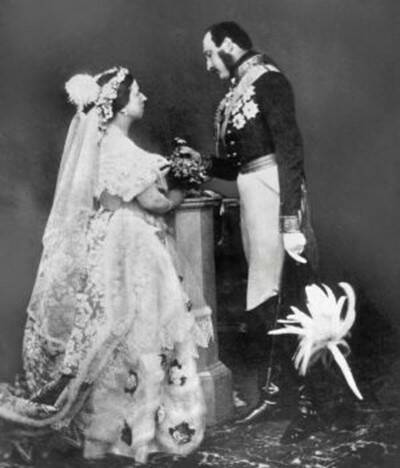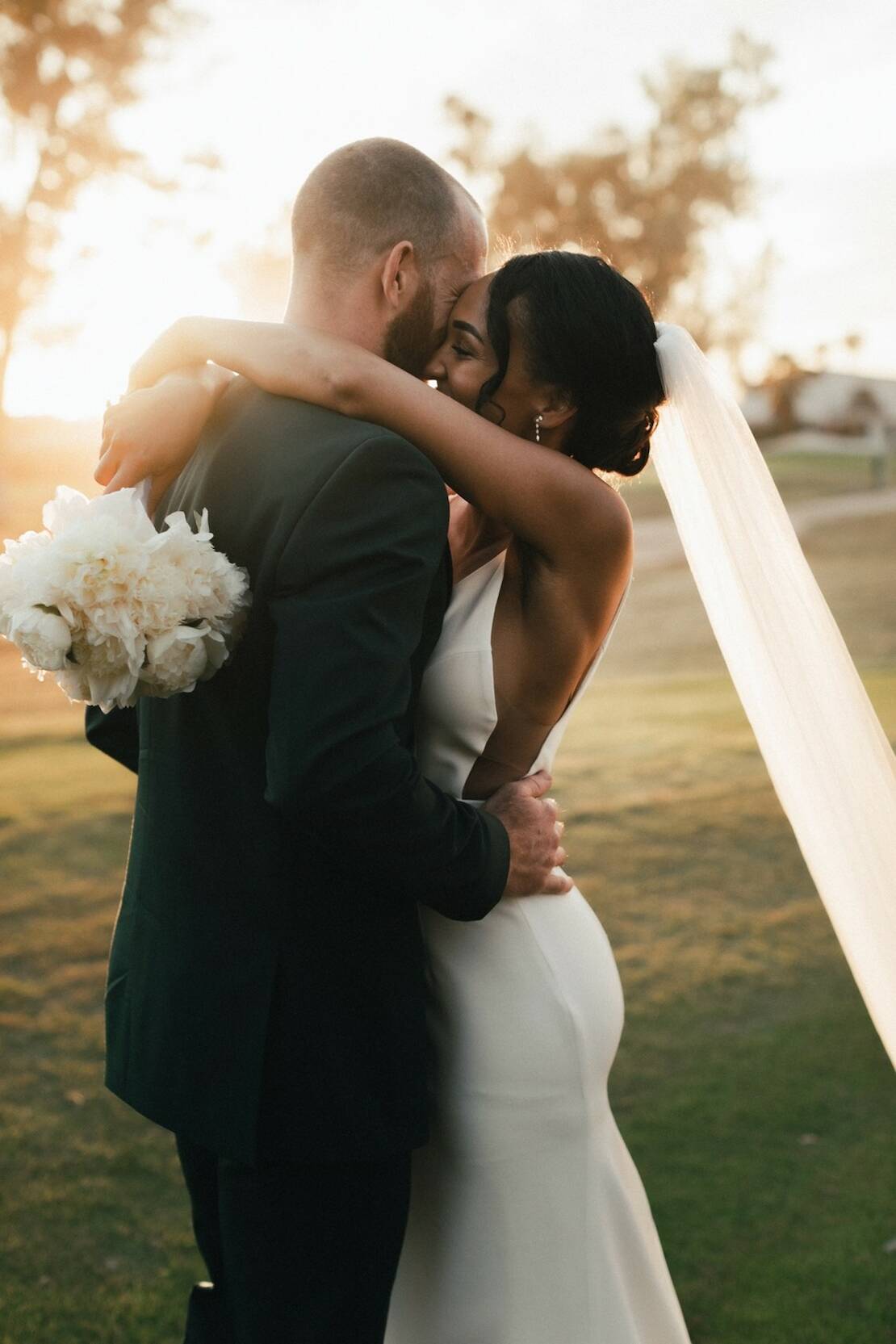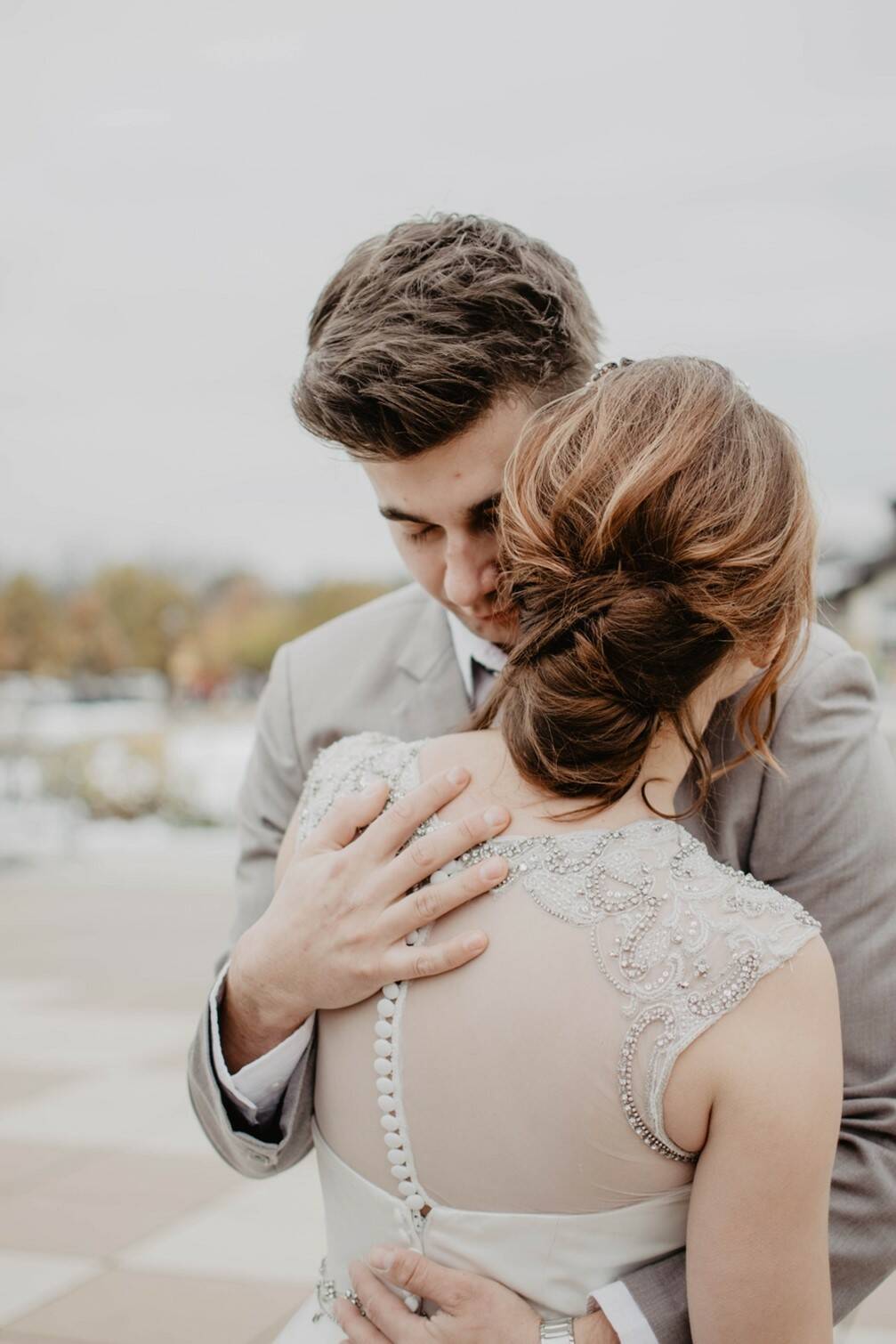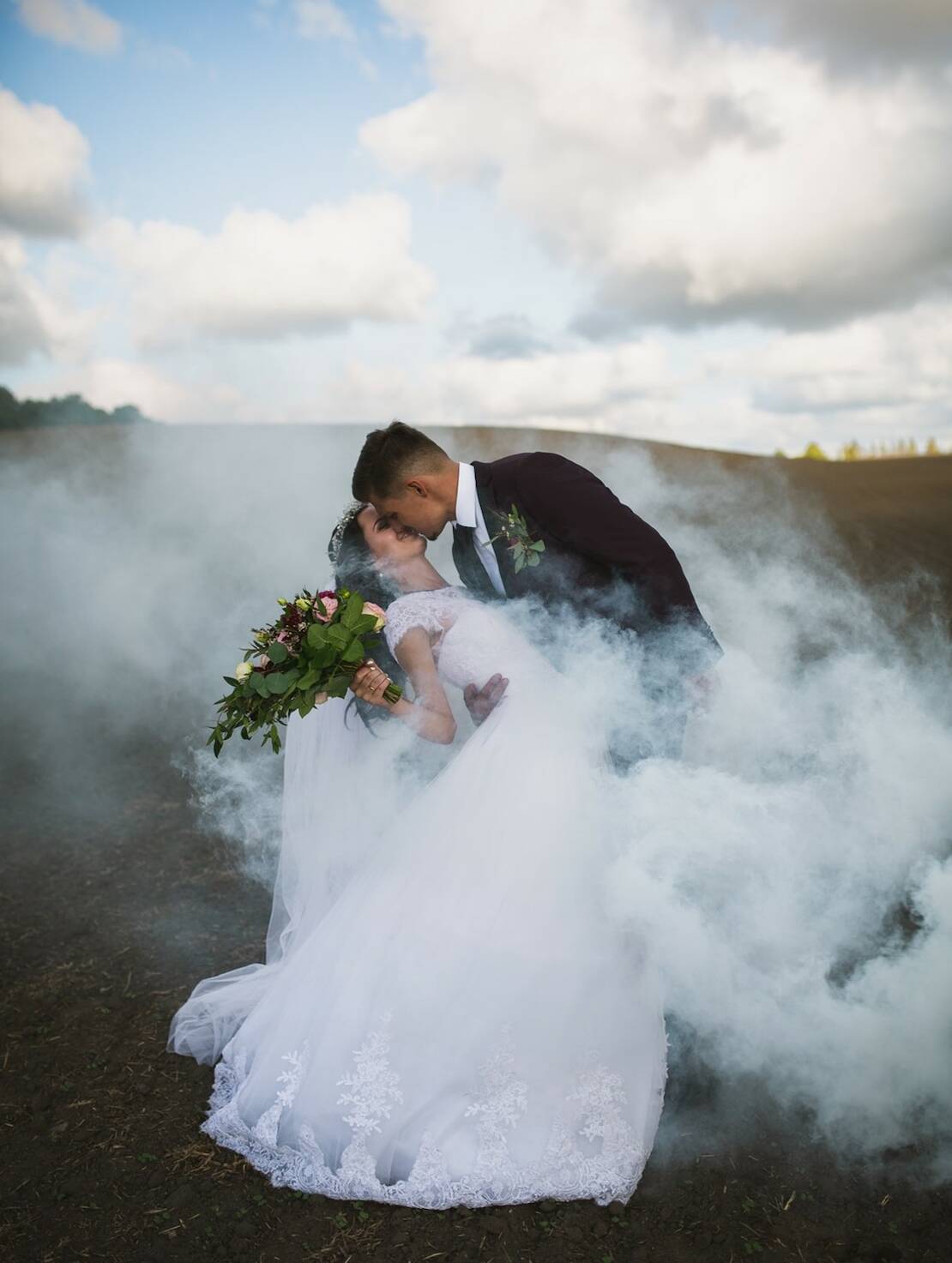- Home
- / Blog
- / Art History
Wedding Photography - Past and Present
10/07/2021
The Right Wedding Photographer for Your Perfect Day
Your wedding day is filled with beautiful memories and the people you love most, so finding the right professional wedding photographer to capture the formal shots during and after your ceremony should be a top priority in the wedding planning process.
The wedding photography business can be intimidating for every bride and groom, with a myriad of styles, packages, personalities, and abilities to explore. Memories are priceless, so while it is often tempting to hire a low-cost photographer, it is usually best to choose the perfect wedding photographer first, and then iron out the costs elsewhere in your wedding budget.
Great professional wedding photographers have a distinct style, with clear communication and photo packages that are easy to understand.
When Did Wedding Photography Start?

The oldest known photograph, View from the Window at Le Gras, was taken around 1826 by the French inventor Joseph Nicéphore Niépce. Since then, photography has undergone a complete evolution. Modern wedding photography has progressed beyond recognition, moving from those very first 8-hour exposures in oil-treated bitumen and large-format film to digital photography, with the sophisticated computerized retouching techniques we use today.
One of the earliest known wedding photos is of Queen Victoria and Prince Albert in February 1840, but it was not for another hundred years that wedding photography became viable as a commercial venture.

and Prince Albert, 1840, Wikimedia Commons
Early photographic processes were slow. Technology was bulky, and materials were expensive. Wedding photography was a luxury for the wealthy, but the equipment was too cumbersome to transport to a venue, so those who could afford it would have their portraits taken at a studio before or after the ceremony.
For most of the 19th Century, wedding photography was limited to studio photographers. People only had one or two formal portraits, and occasionally included a group portrait of the wedding party. At times, the backgrounds were filled in by hand with a brush due to the technical limitations of the cameras of the time.
In the late 1930’s roll film and color film became available. Camera and film technologies were refined during the World War II years, so by the time the post-war wedding boom happened many cameras were lightweight, portable, and readily available to the general public.
Overnight, the wedding became an event worth capturing and the wedding photography business became commercially viable. Post war, ex-military photographers saw wedding photography as a lucrative job opportunity, causing a drastic shift in the history of wedding photography.
Mid-century wedding photography became accessible to ordinary people, but remained relatively limited due to the expense of film, so although wedding photography had moved from formal studio portraits to location-based event photography, casual and candid photos were still staged and relatively static. It wasn't until the 1970's that film became cheaper, and photographers became more skilled at experimenting with their personal style of photography.
Traditional wedding photography gave way to a journalistic-style photography with a casual approach, which eventually unleashed the creativity we see in wedding photography today.
Digital technology has revolutionized photography both practically and creatively. Professional photographers are now able to focus solely on wedding photography, and offer bridal parties an enormous choice when it comes to style and personality.
Today, a bride and groom can have their professional wedding photos displaying online during their wedding, using a completely different process to the famous 8-hour exposure of the View from the Window at Le Gras, as captured by Nicéphore Niepce when he invented the world's first working camera in 1826.
5 Styles of Wedding Photography to Suit Every Couple's Taste.
The past 20 years have seen an explosion in the styles and creativity offered by professional wedding photographers. Couples today can match a photographer with the exact style and budget that's perfectly suited to their personal dreams and wedding photography needs.
1. Traditional Wedding Photography
Traditional photography is a classic style of wedding photography that's simple, clean and timeless. This style will never be dated or look old. The photographer captures formal photographs such as bridal portraits, couple portraits, and various group photos.

Bridal Party Photographed by Jakob Owens, via Unsplash.
Traditional style wedding photographers also focus on key details such as the wedding ceremony, the ring exchange, cake cutting, and any other special moments the couple wishes to preserve as a memory.
2. Documentary or Photojournalistic Wedding Photography
Documentary style wedding photography is a natural evolution from traditional wedding photography, and is a popular choice of style for both bridal parties and photographers alike. Professional photographers are by nature observers, so they're curious about all the small details many people often miss

A wedding is an event that's overflowing with spontaneous emotion. Little moments happen on the periphery alongside the wedding ceremony, so the best documentary style photographers will mix formal shots with photojournalism techniques to document your wedding day as it happens.
3. Fine Art Wedding Photography
Fine art wedding photography is all about the photographer's use of lighting and composition, with a heavy emphasis on creativity. Each photo is captured with the view of creating a piece of artwork from it, either for the wedding album or for a large-scale photo print. Your photographer will use various shooting and post-production retouching techniques to produce artistic, frameable photos that look impressive on a wall.

Bridal Party Photographed by Nathan Dumlao, Unsplash.
A wedding dress with dramatic lighting can be a fantastic canvas image for a feature wall in your home.
4. Fashion Photography for Weddings.
Fashion photography is a niche genre for weddings that is very technical, and requires a specialist photographer who has a direct interest or natural ability in fashion photography. This style of photography has its roots in editorial photographs and adverts in high-end bridal magazines, which later crossed over into real weddings.

Bride Photographed by Taylor Heery, Unsplash.
The result is a high-end, show-stopping wedding album with a magazine feel.

5. Dark and Moody Wedding Photography
The dark, moody look is becoming very trendy in modern wedding photography. These photos convey a sense romance and intimacy. This style lends itself particularly well to weddings that also include a wedding engagement shoot, as this creates a set of related photos with a rich sense of cinematography and storytelling.
Stormy clouds are ideal for moody wedding shoots, which are usually photographed with natural light in the late afternoon, just as the sun is setting against a backdrop of deep, dark shadows.
Choosing The Right Photographer
Every wedding photographer is different, so getting your photography right on your wedding day is as much about finding the perfect wedding photographer as it is about choosing your preferred photography style. Below are the top things to consider when deciding on your wedding photographer:
Your Personal Taste, and Your Gut Feel.
Browse through the portfolios of local photographers in your area to build your visual sense of taste. After a while you’ll start to know what you like and dislike about a particular style, which will guide you towards the right look and feel for your wedding photos.
Follow your instinct, and allow yourself to be steered towards the photographer who you naturally like best, and click with.
How Much Do You Value Your Photos?
Is your home filled with framed photographs and large-scale prints, or are you more likely to create a personalized coffee table book of photos for your wedding day?
Small prints lend themselves well to traditional or documentary style photography, whereas feature-wall canvas prints work better when you opt for fine art wedding photography. Fashion photography is perfect for coffee table books.
How Comfortable Are You in Front of a Camera?
Some people love being photographed, so posing comes naturally, whereas other people need the guiding hand of the photographer to tell them how to stand.

Photojournalism and documentary style wedding photography is ideal for people who like being in front of the camera, and have a natural ability to look good in photos. For those who feel nervous or struggle to relax, a fine art photographer can arrange your wedding photo poses to create the desired look and feel.
How Much Time Can You Spend with Your Photographer to Plan Your Images?
Planning a wedding takes time, and there's always someone you'll need to talk to or meet with to get things right. If you would like to have dramatic, eye-catching images in your home and wedding album, you will need to make plenty of time to sit with your photographer and chat about the type of images you want, how to create them, and how to fit them into your wedding day timeline.
If your time with the photographer is limited before the wedding, it's best to go for a documentary style photography that captures the day as it happens.
Which Style of Photography Works Best with Your Wedding Theme?
If you have already decided on a theme for your wedding, it's best to pick a wedding photographer who fits into your existing theme without tweaking their personal style.
An all-white, bright and light, outdoor garden wedding won't lend itself well to dark and moody photography. Likewise, a dramatic night-time wedding will not fit well with soft, pastel-styled fashion photography.
The Secret to Having Perfect Wedding Photography
Wedding photography has been around for over 180 years, so couples today have the opportunity to sparkle in their wedding photos regardless of the style or photographer they choose.

Bridal Party Photographed by Elvis Bekmanis, Unsplash.
When choosing your wedding photographer pay attention to your gut feel, and look at a variety of styles to see where your taste takes you. Once you know what you would like your wedding photos to achieve, find a professional photographer who naturally produces your preferred look and feel
The most important element in amazing wedding photography is comfort.
You should feel comfortable with your photographer at all times. This will help you look relaxed in your wedding photos, and creates plenty of little moments for your wedding photographer to capture your special day as it unfolds.
_____________________________________________________________________________________________________________________________________
 Natalie Dent is a former professional photographer turned full-time copywriter. She has worked with big brands and small companies to bring the value of storytelling into the customer experience. Natalie is passionate about the relationship between words and images, and how they relate to brands. She holds a degree in visual communication, and a diploma in freelance journalism and travel writing. Her courses in photographic storytelling have been adapted for cruise ship enrichment programs all over the world.
Natalie Dent is a former professional photographer turned full-time copywriter. She has worked with big brands and small companies to bring the value of storytelling into the customer experience. Natalie is passionate about the relationship between words and images, and how they relate to brands. She holds a degree in visual communication, and a diploma in freelance journalism and travel writing. Her courses in photographic storytelling have been adapted for cruise ship enrichment programs all over the world.
@copywriternatalie


